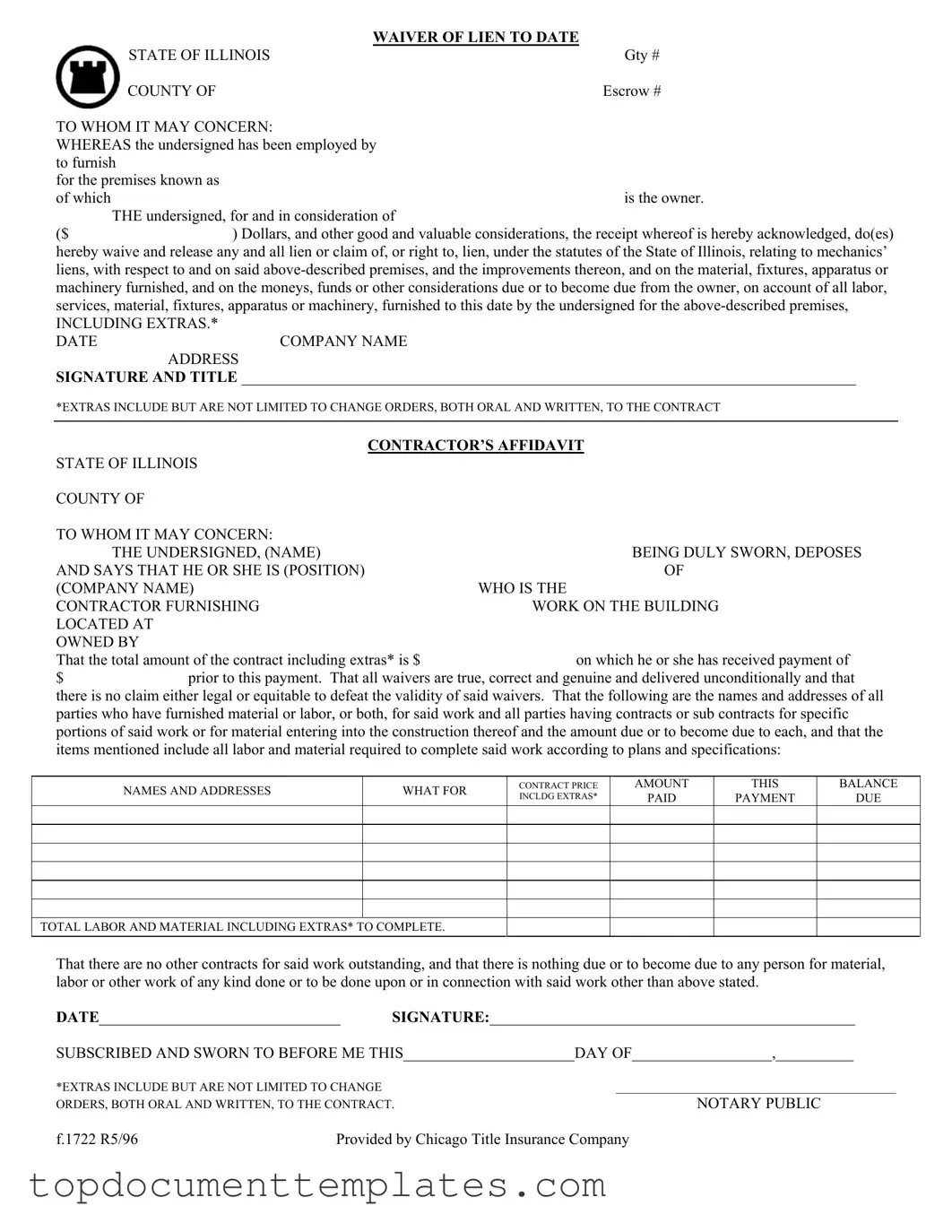The Chicago Title Waiver Format form serves as an essential document in the construction and real estate industries, particularly in Illinois. This form provides a clear and structured way for contractors and subcontractors to waive their rights to file a mechanics’ lien against a property. By doing so, it helps to ensure that the property owner can proceed with their project without the risk of unexpected claims from those who have provided labor or materials. The form includes vital information such as the company name, the premises involved, and the total contract amount, including any extras. Furthermore, it requires the contractor to affirm that they have received payment and that all waivers are accurate and genuine. This transparency protects all parties involved by detailing who has provided labor or materials, the amounts owed, and confirming that no other claims exist. The inclusion of a notary section adds an extra layer of authenticity, making the document legally binding. Overall, the Chicago Title Waiver Format form is a crucial tool that facilitates smoother transactions and protects the interests of property owners and contractors alike.
